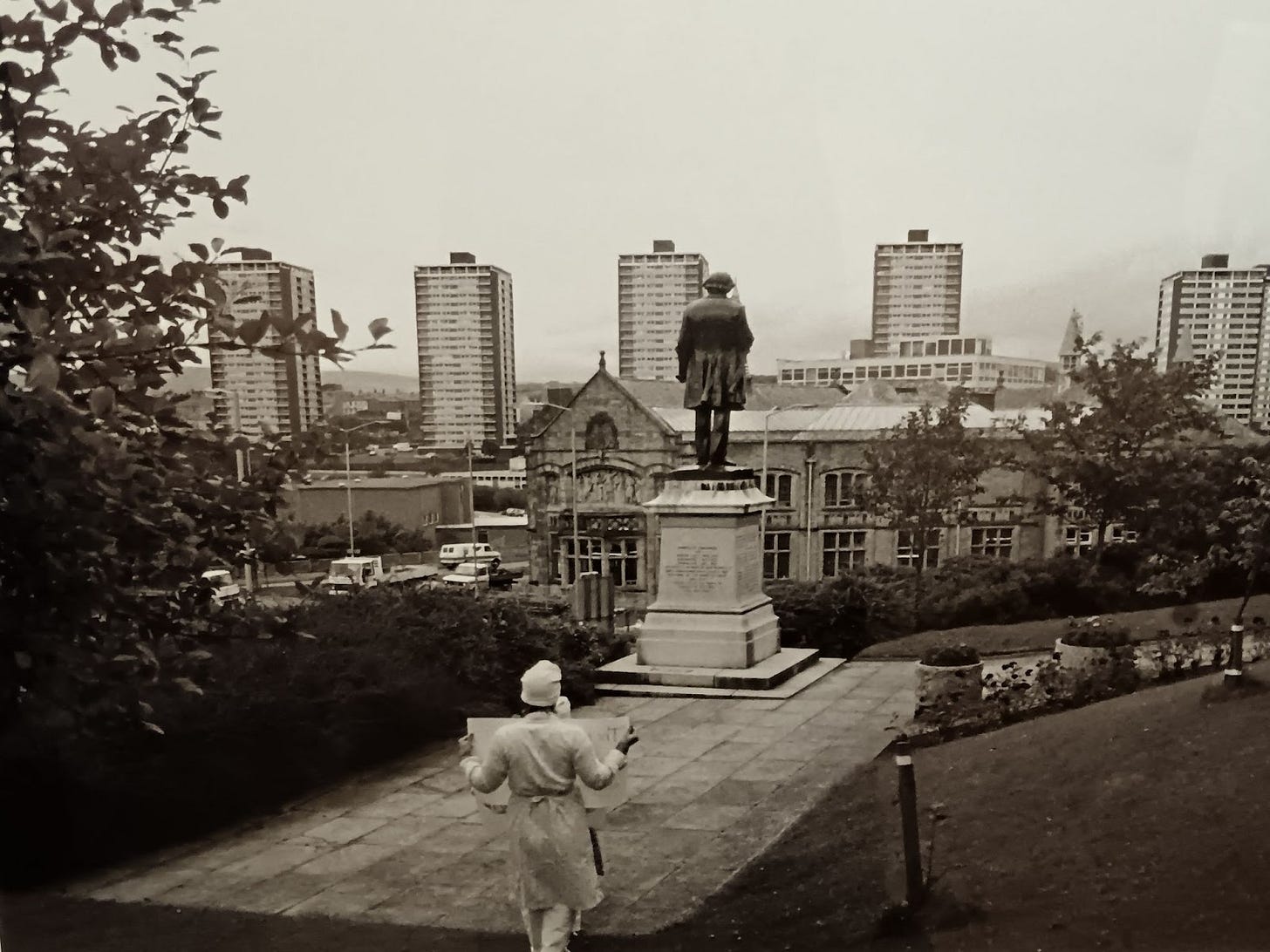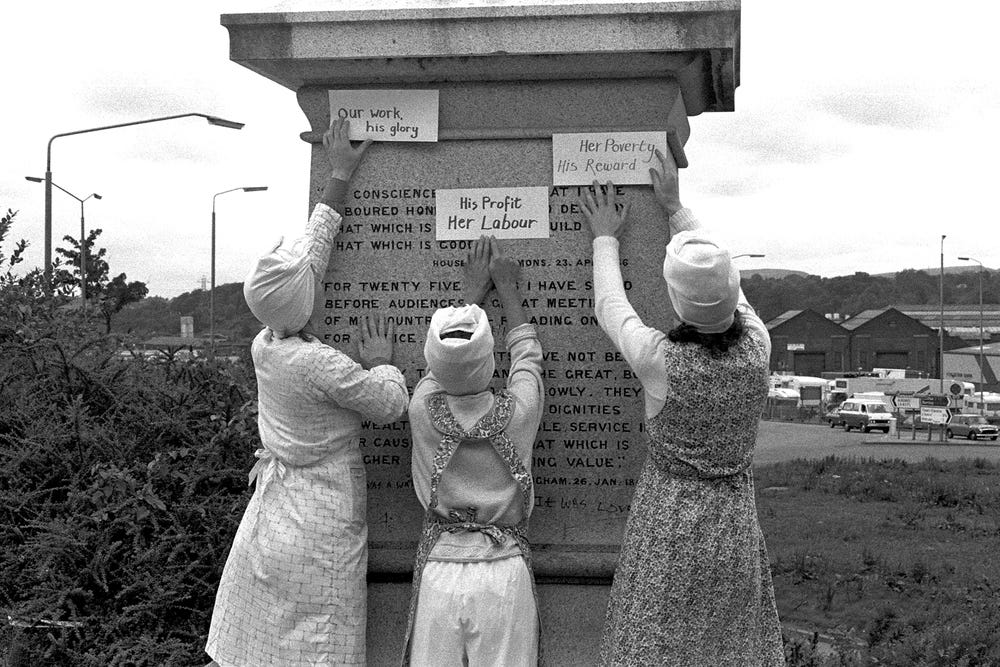Lives Less Ordinary, Two Temple Place: Working-class culture and self-representation
When the statue of Edward Colston, a British slave trader, was toppled in Bristol in June 2020 by protesters during the Black Lives Matter protests, many thought this set a precedent.

Triple Transformations: Monument to Working Women, 1985 by Shirley Cameron, Monica Ross and Evelyn Silver plays with the notion of the monument, questioning what it means to erect something in celebration of someone or something. In the performance piece, the trio, dressed like 1950s housewives, mount the statue of John Bright - an influential industrialist - in Rochdale, overlaying the monument’s text with their own: ‘Our work, his glory’, ‘His Profit’, ‘Her Labour’. This goes some way to correcting ‘The Great Man’ narrative which excluded the thousands of working women who toiled in factories like Bright’s, and the countless more who received no praise for supporting men to achieve - and be immortalised in statues like Bright’s - through housework and other unpaid labour.

Triple Transformations joins many similar artworks in Two Temple Place’s exhibition Lives Less Ordinary, Working Class Britain Re-seen in documenting ‘compelling assertions of pride, tenderness, resilience, humour and hopefulness’ from working-class artists, correcting the ‘often reductive narratives of crisis and struggle that traditionally characterise representation of working-class people and communities in British arts institutions’: a ‘gaze from within’.
In front of Hetain Patel’s work I am seized by a seemingly minor detail. Ignoring the artist dressed in a Spider-Man costume in the foreground, we see a fitted carpet, with a broadly ‘Oriental’ pattern. The carpet is fitted, and therefore likely bought in the UK, but its pattern suggests otherwise. Like many things native to the far-flung corners of the British Empire, its design is ‘borrowed’ (most things were taken by force). The carpet is therefore a result of hybridity, taking influence from one homeland and installed in a new one. Influences like these were imported en masse and appeared frequently as motifs in the homes of the 1970s and 1980s, where their origins often went unnoticed.
Lives Less Ordinary is also an object-lesson in the exploration of memory. It asks its viewers important questions: how do we remember, what is deemed worthy for inclusion in a personal and collective memory, and what makes us stop in front of an artwork, impelling us to relive a moment? The exhibition runs until 20th April 2025, and admission is free.






